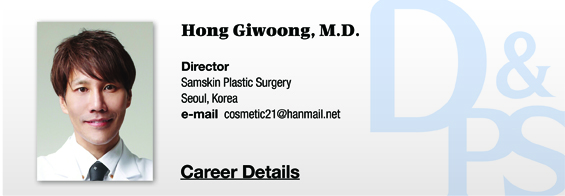
As today’s patients pursue subtle, natural improvement, dermal & volume filler, thread and botulinum toxin have become among the most popular procedures. Minimally invasive plastic surgery have established itself as a safe and highly satisfactory area of treatment. Dr. Hong Giwoong of Samskin Plastic Surgery has been interested in and vigorously researching minimally invasive plastic surgery since its introduction in Korea. He will discuss how far minimally invasive plastic surgery has come since its early days in Korea. He will also include in the discussion, tips on successful consultation, treatment techniques per site, and possible complications of minimally invasive procedures. Dr. Hong offers his opinions based on his personal experiences and would like the readers to consider his input as one of many varying insights into this fast-growing area of plastic surgery.
Today’s world is changing so quickly that you will likely find yourself falling behind trends the moment that you stop paying attention. In this fast-paced and increasingly diversified digital world, it is overwhelming just to keep up with all the new developments.
This is also true for the field of aesthetic medicine. A few decades ago, plastic surgery had only a handful of subfields, a far cry from the myriad of treatments and procedures available today. In the old days, plastic surgery procedures in Korea mainly consisted of blepharoplasty(double-eyelid surgery), rhinoplasty and breast augmentation with silicone implants, and surgical facelift.
Today the devices, tools and techniques used in aesthetic surgery have become so diverse that plastic surgeons who are not up-to-date with the latest trends will be stumped by patients who know more about the new procedures. I feel that the field of aesthetic medicine is evolving fast globally thanks to the internet that allows us to learn about important trends around the world as they are happening. As people of all cultures and ages are interested in improving their looks one way or another, information about new developments in aesthetic medicine is spreading rapidly, driving the fast-paced developments in the field.
[Advertisement] Reandnè Thread Series – Manufacturer: GTG KOREA(www.gtgkorea.com)
The latest trends of aesthetic procedures prefer naturalness. Preference of everything organic and natural have spread from the food industry into fashion and even plastic surgery. Such social and cultural awareness of organic and natural beauty is changing how the patients view their aging face. They are turning away from the unnaturally pulled appearances of traditional wrinkle removal procedures toward a subtle improvement that makes them look their age but dignified. The Japanese patients’ obsession with subtle and natural results may have spilled over to Koreans as well.
Minimally Invasive Plastic Surgery for Natural Beauty
In this light, the minimally invasive plastic surgery will be an ideal choice for bringing subtle and natural-looking improvements. Minimally invasive plastic surgery is also known as “petit plastic surgery” in Korea and Japan. From a clinical point of view, I think petit plastic surgery has a narrower definition than minimally invasive plastic surgery and generally consists of four main categories; botulinum toxin, dermal & volume filler, thread, and dermatologic devices such as laser, RF, and ultrasound, etc. Minimally invasive plastic surgery would also include all non-incisional procedures including fat graft, continuous buried suture blepharoplasty, and scar removal, etc.
The French word of “petit” has the meaning of “small” and “pretty” and has been used in Japan to describe something that is fashionably small and dainty. Minimally invasive plastic surgery or “petit plastic surgery” allows patients to return to normal activities immediately as it is non-invasive and causes minimal swelling. It also does not drastically alter the facial structure, therefore, has very low risk of permanent complications and can be revised whenever as is necessary. Minimally invasive procedures have been established as a sub-area of plastic surgery and now boasts much more diverse materials, tools and techniques than those of its early days. Indications and effects have also expanded leaps and bounds. As the minimally invasive procedures offer an attractive business model, many surgeons venture into it without sufficient training on facial anatomy, correct usage, and the risk of complications. This has resulted in a high rate of malpractice and complications. Studies on facial anatomy and physiology as well as psychological, philosophical and social approaches to patient consultation and safe treatment techniques are needed to increase the safety and efficacy of minimally invasive aesthetic procedures.
-To be continued.




















